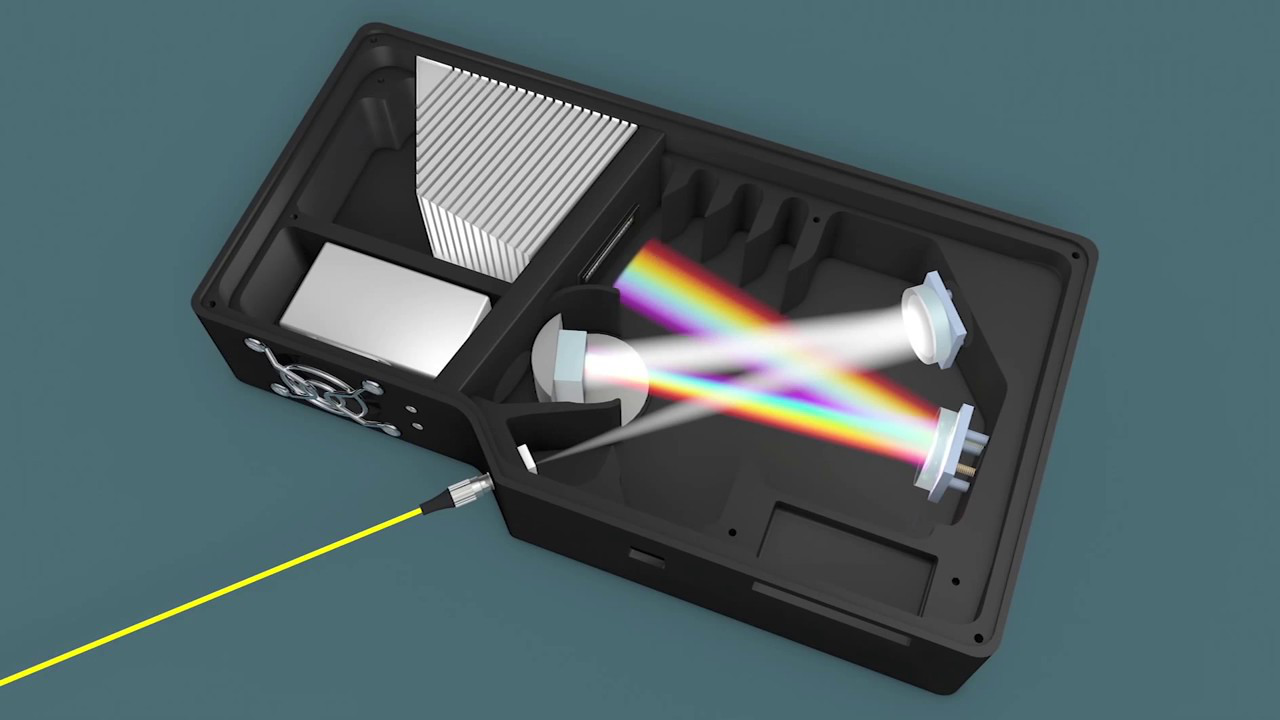Mini spectrometers are compact devices whose image sensor, optical system and circuit are designed to fit into a small case. Like other spectrometers, they are used to measure the amount of light across a broad spectrum of colors.
If you are just getting started with spectrometers, you likely have lots of questions running through your mind. You’re probably wondering what to look for in a right spectrometer (including the specs, size, type, prize), functionality, among other critical aspects. In this article, we shall highlight all you need to know about mini spectrometers to help point you in the right direction.
So, what is a mini spectrometer?
As mentioned earlier, mini spectrometers are portable and compact fiber optic devices for NIR, VIS and UV measurements. These instruments are low cost and are suitable for applications like color measurements, environmental measurement as well as quality control in production lines. Spectrometers are used in spectroscopy for generating spectral lines and measuring their intensities and wavelengths.
How is a mini-spectrometer used?
Mini spectrometers are used in a range of fields, including in astronomy for assessing the radiation from astronomical objects to uncover the chemical composition, characterization of proteins, tracking dissolved oxygen in marine ecosystems, analyzing respiratory gas in hospitals and studying spectral emission lines of galaxies that are further away.
How spectrometers work
For the past two decades, mini spectrometers have changed from a novelty to the preferred option for a majority is modern users. People appreciate the superior flexibility and utility offered by the small size and compatibility of these mini spectrometers, along with the vast range of sampling accessories.
The primary role of a spectrometer is to break light into its spectral components, decode the wavelength-encoded signal and read it out and display the results on the screen. So, first, light is directed into the spectrometer through a fiber optic cable, and a narrow aperture referred to as entrance slit. This slit vignettes the light as it goes into the spectrometer. In many devices, the divergent light then collimates (thanks to the concave mirror) before heading to a grating.
It is in a grating that the spectral components of light get dispersed at different angles. The light becomes accurately parallel by the second concave mirror and is displayed onto the detector. In some cases, a concave holographic grating can be utilized to execute these functions in one go.
Once the light reflects on the detector, the photons get converted into electrons that are digitized and transmitted through a USB to the screen. The computer calculates the signal according to the linear dispersion of the diffraction grating and number of pixels in the detector to come up with figures that allow the data to be plotted as a wavelength function over a particular spectral range. This information can be utilized and adjusted for different spectroscopic applications.
What to look for in a mini spectrometer
Mini spectrometers aren’t created equal – so, it is essential to know how to differentiate one device from another. Here are a few things to look for when looking to buy one.
Size
If you are looking for a compact device, pick one with:
- Small detector size
- High grating dispersion
- Low numerical aperture
Cost
If you are looking to get a quality spectrometer without breaking the bank, look for:
- Low-resolution spectrometer
- Small size spectrometer
- Low-end, non-cooled CMOS/CCD-based detector
Speed
If you are looking for a fast device, you should look for:
- High speed, non-cooled cameras
- High throughput spectrometers
- Low f-number/high NA
- Transmission grating-based
- Few optical lenses
Sensitivity
If your sample has very little light and are looking for a sensitive device to help you get the best possible results, then you want to find:
- Highly sensitive CMOS/CCD detector with tall pixels
- Cooled detector/camera
- High throughput spectrometers with: Few optical elements, low f-number/high NA, transmission grating-based, signal to noise ratio
If you need your signal levels to be stable all through, you have different options based on the actual signal level as well as the balance of performance vs cost.
If you have a stronger signal level, go for:
- NMOS detectors with minimal noise
- High throughput spectrometer
If you have a very weak signal level but are keen on saving money, go for:
- Non-cooled CMOS/CCD detectors
- High throughput spectrometers
If you have a very weak signal level that seems to drown the noise, go for:
- High throughput spectrometers
- Cooled CMOS/CCD detectors with tall pixels
- Dynamic range
If there’s extensive variation in your signal level, look for:
- Low stray-light spectrometers
- NMOS detectors with huge dynamic spectrum or non-cooled CMOS.CCD detectors where you average over several short integration periods
Robustness
If you’ll use your device in demanding environmental conditions, or use it under different temperature conditions then go for:
- Low wavelength and power shift spectrometers
- Short integration time or temperature regulated detectors for longer integration time



